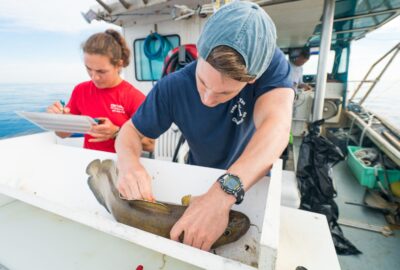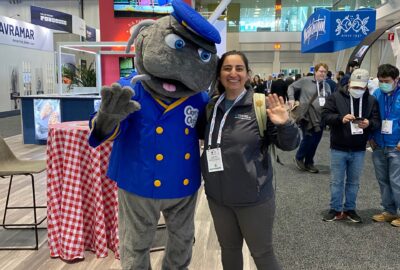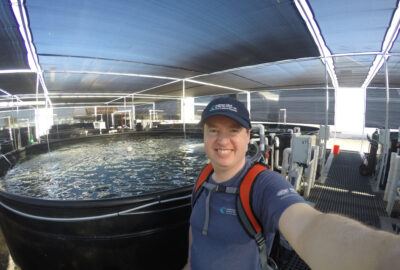Responsible Seafood Supports Healthy Oceans
By New England Aquarium on Wednesday, October 27, 2021

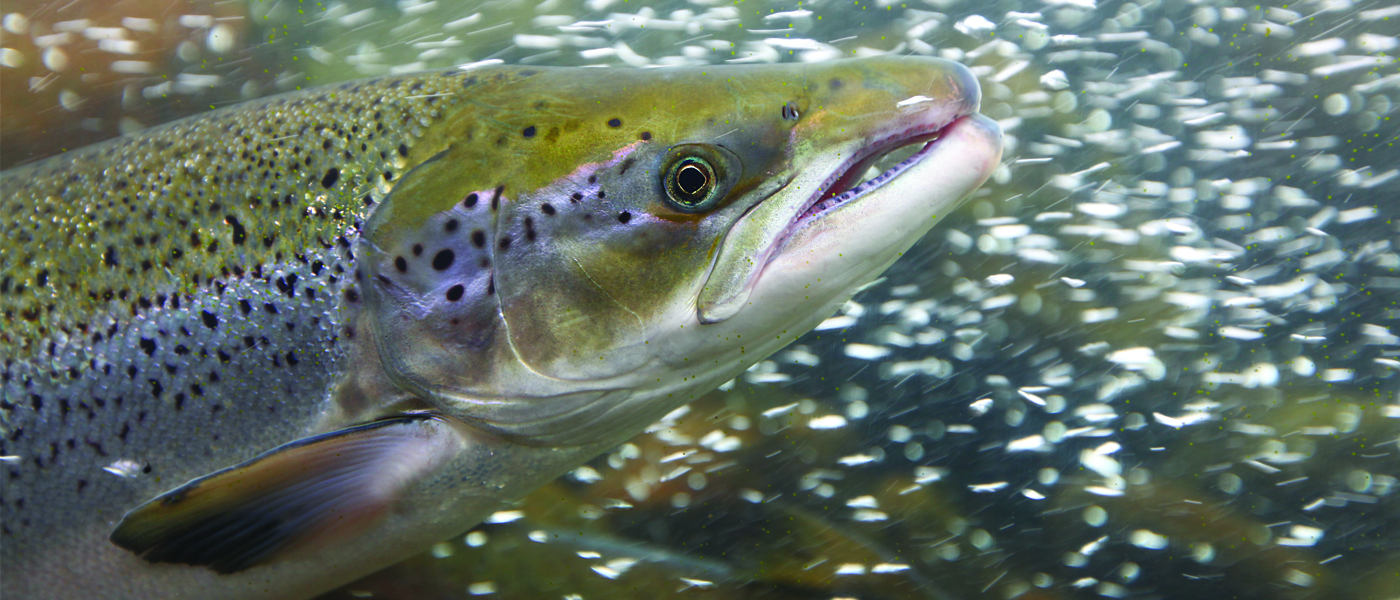
Updated October 26, 2023
Seafood is a significant source of protein worldwide, with many low- and middle-income island and coastal nations reliant on seafood as their primary source of protein. But many seafood lovers might not know that their fish, seared salmon, and shrimp scampi may come at a cost to other species and the environment.
The average American eats 20.5 pounds of fish and shellfish each year, with shrimp topping the list as the favorite. Between 65 and 85% of the seafood we eat is imported from around the world, and about half comes from aquaculture.
Wild capture fisheries provide a steady supply of around 90 million metric tons (mmt) of food each year, while aquaculture, which is the fastest-growing protein production industry in the world, produced over 88 mmt in 2020, according to data from the Food and Agriculture Organization (FAO). In the U.S. alone, American fishermen caught nearly 8.4 billion pounds of fish and shellfish (3.8 mmt) and produced 658 million pounds (0.3 mmt) of farmed seafood products, according to the National Oceanic and Atmospheric Administration’s 2020 Fisheries of the United States report.
Despite depending on the sea as a food source, the ocean remains largely unprotected. To ensure a healthy and vibrant ocean for years to come, the Aquarium’s Anderson Cabot Center for Ocean Life (ACCOL) works closely with the seafood industry to advance responsible practices to combat a variety of challenges from bycatch to overfishing.
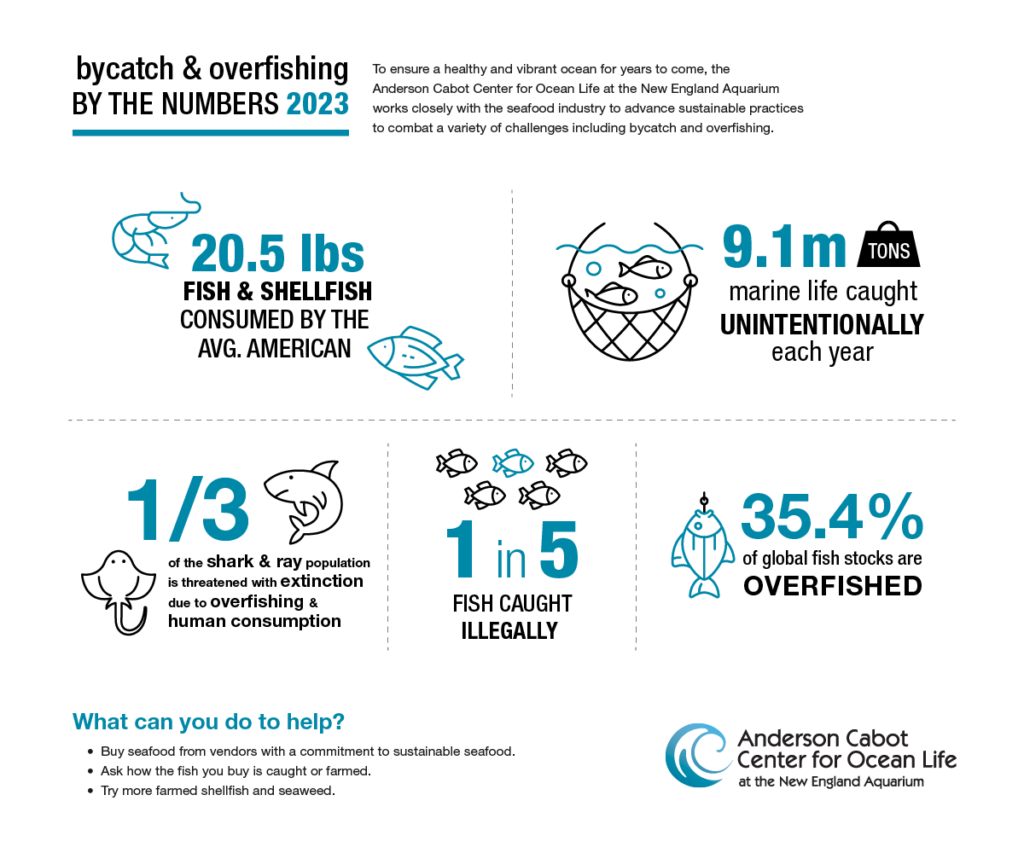 Here are some facts:
Here are some facts:
- Bycatch is a critical threat to many species of marine life, with 9.1 million tons of marine life caught unintentionally each year. (Pérez Roda et al., 2019)
- According to the UN Food and Agriculture Organization (FAO), illegal, unreported, and unregulated fishing activities are responsible for the loss of 11–26 million tons of fish each year, which is estimated to have an economic value of US $10–23 billion.
- 20 million endangered, threatened, or protected animals interact with fishing gear each year, according to FAO data.
- 35.4% of global fish stocks are overfished. (FAO 2022)
- Less than 70% of major commercial fish species are fished at biologically sustainable levels, a number that has been decreasing over time. (FAO 2022)
- One-third of the world’s sharks and rays are threatened with extinction from overfishing and human consumption. (Dulvy et al. 2021)
- One in five fish is caught illegally; 1,800 pounds of illegal fish are caught every second (Pramond et al. 2014).
- The United States imported an estimated $2.4 billion worth of illegal, underreported, and unregulated products in 2019, or 10.7 percent of total U.S. seafood imports. (U.S. International Trade Commission. Seafood Obtained via Illegal, Unreported, and Unregulated Fishing: U.S. Imports and Economic Impact on U.S. Commercial Fisheries. Publication Number 5168)
What we’re doing to help:
- For over 20 years, the New England Aquarium has partnered with major seafood buyers to advance sustainable practices in wild fisheries in aquaculture, including working with fishermen and seafood suppliers to promote fishing gears and techniques that reduce bycatch.
- Aquarium scientists have helped set globally important seafood certification standards, many of which are demanded by major retailers and seafood companies domestically and abroad.
- As a Founding Member of the Global Sustainable Seafood Sustainability Initiative (GSSI), the Aquarium helped develop a global benchmark tool for seafood certifications that ensures that recognized standards are appropriately defined and address key sustainability factors.
- The Aquarium advocates for responsible ocean use and conservation in U.S. regulation.
- ACCOL works closely with the aquarium’s aquarists, feed suppliers, and food service company to make sure that seafood fed to our guests and animals is responsibly sourced.
What can you do to help?
- Buy seafood from vendors with a public commitment to buying and selling sustainable seafood.
- Ask the waiter at a restaurant or clerk at the fish counter how their fish is caught or farmed.
- Diversify your menu and try more farmed shellfish and seaweed.
- Look for ecolabels, such as the Marine Stewardship Council (MSC) certification and the Aquaculture Stewardship Council (ASC) or Best Aquaculture Practices (BAP) certifications that indicate sources that have met defined environmental targets and traceability requirements.
References:
- Cherry, Drew and John Fiorillo “New List of America’s Most Popular Seafood Species Released, Showing Some Sharp Shifts.” IntraFish.com, June 7, 2023. https://www.intrafish.com/markets/new-list-of-americas-most-popular-seafood-species-released-showing-some-sharp-shifts/2-1-1463560.
- Dulvy, N.K., Pacoureau, N., Rigby, C.L., Pollom, R.A., Jabado, R.W., Ebert, D.A., Finucci, B., Pollock, C.M., Cheok, J., Derrick, D.H. and Herman, K.B., 2021. Overfishing drives over one-third of all sharks and rays toward a global extinction crisis. Current Biology, 31(21), pp.4773-4787.
- Ferreira, J. et al. 2022. Economic contributions of U.S. seafood imports: a value chain perspective. University of Florida Economic Impact Analysis Program.
- Food and Agriculture Organization. 2022. The State of World Fisheries and Aquaculture 2022.
- Kelleher, K. 2005. Discards in the world’s marine fisheries. An update. FAO Fisheries Technical Paper 470. FAO, Rome.
- National Marine Fisheries Service. 2022. Fisheries of the United States, 2020. U.S. Department of Commerce, NOAA Current Fishery Statistics No. 2020.
- Pramod, G., Nakamura, K., Pitcher, T.J. and Delagran, L., 2014. Estimates of illegal and unreported fish in seafood imports to the USA. Marine Policy, 48, pp.102-113.

